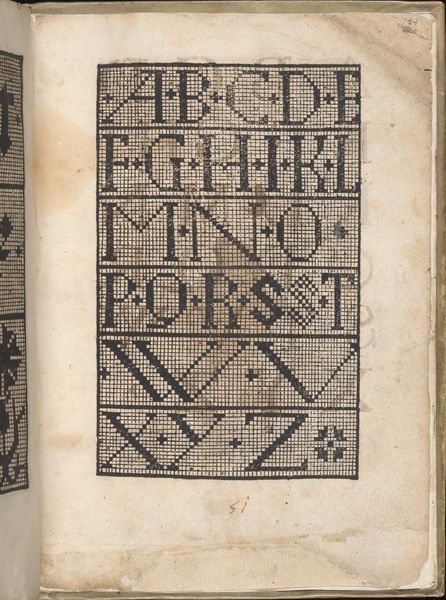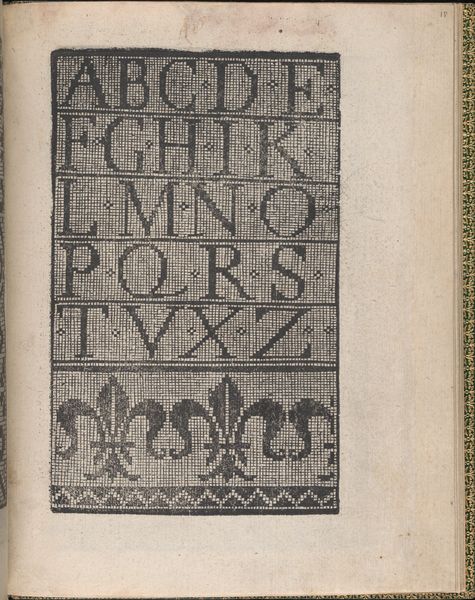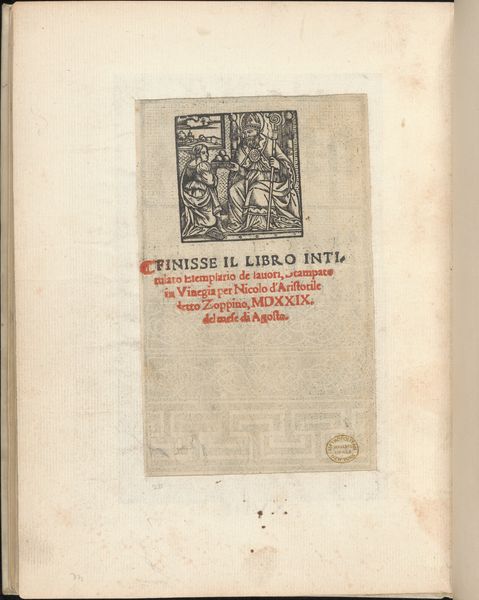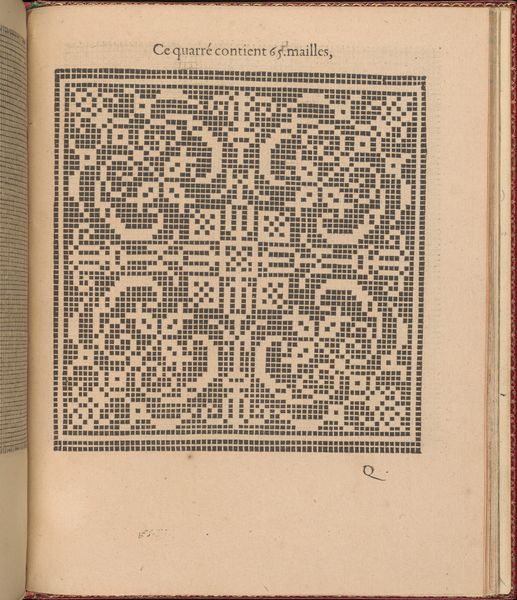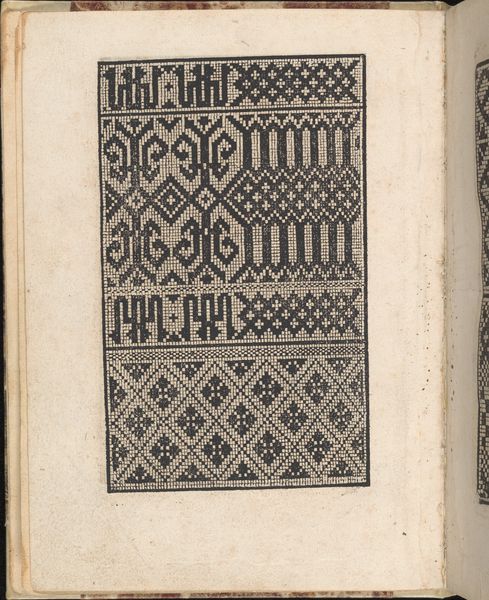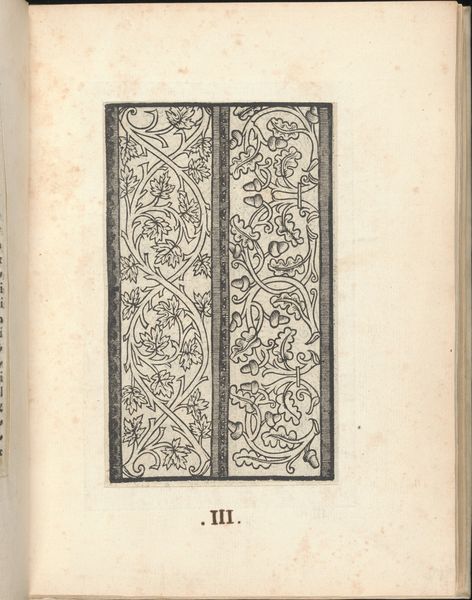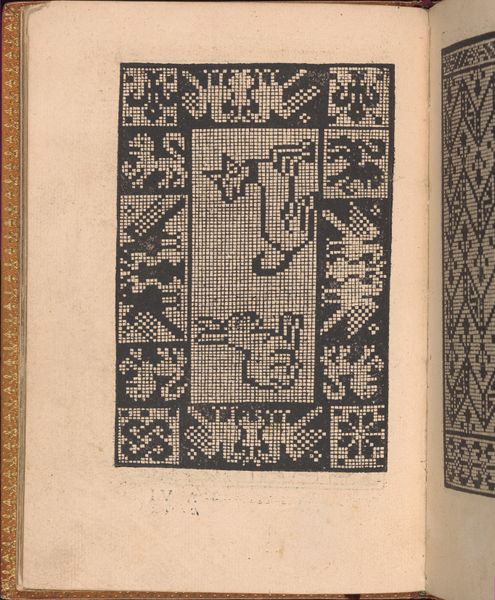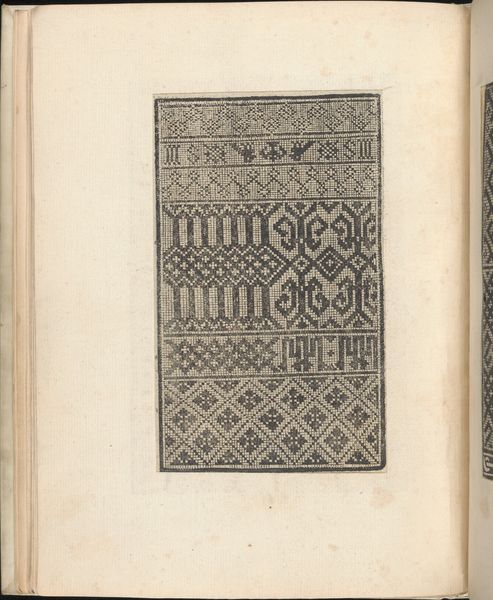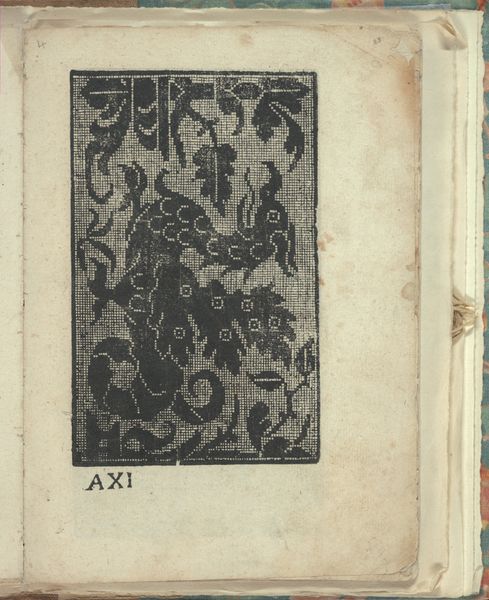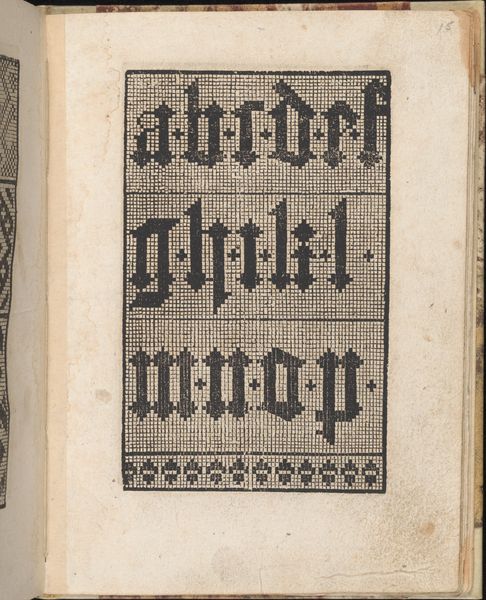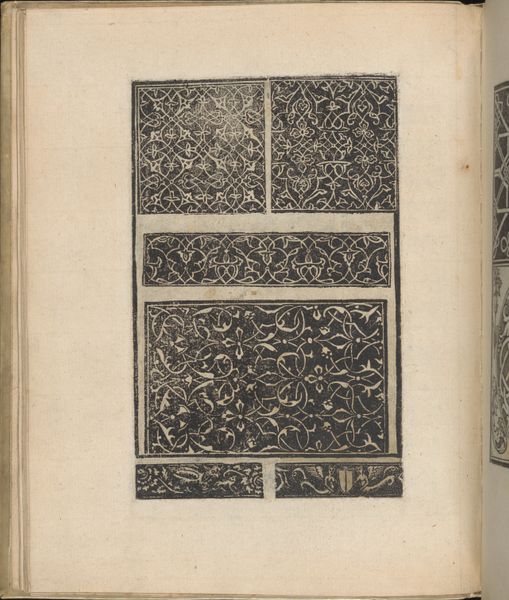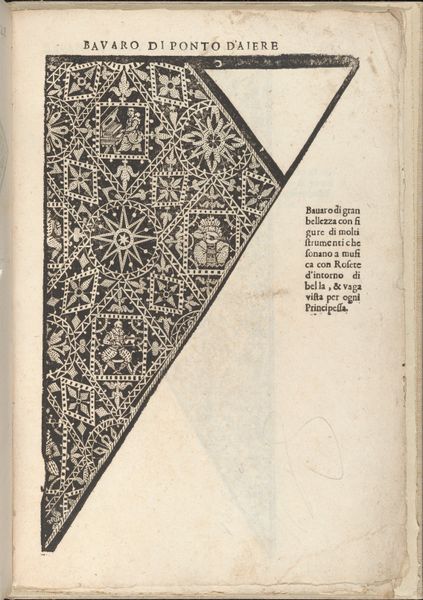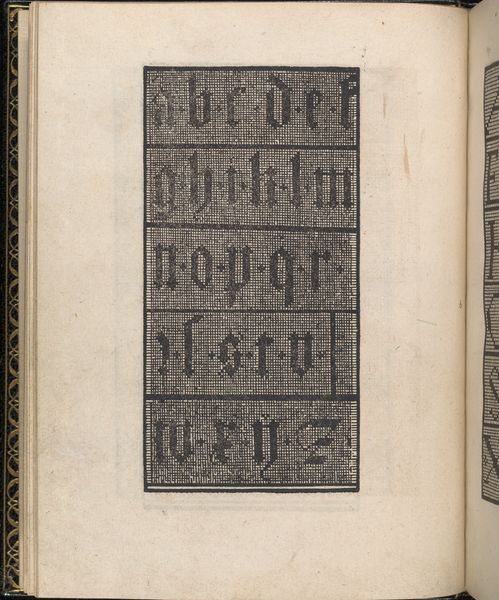
drawing, graphic-art, print, paper, typography, woodcut
#
drawing
#
graphic-art
# print
#
book
#
sketch book
#
paper
#
11_renaissance
#
typography
#
geometric
#
woodcut
#
line
#
italian-renaissance
Dimensions: 9 5/16 x 7 1/4 x 15/16 in. (23.7 x 18.4 x 2.4 cm)
Copyright: Public Domain
Editor: So, this is “Esemplario di lavori, page 16 (verso)" created in 1529 by Nicolò Zoppino. It’s a woodcut on paper. It’s like a sampler, but with letters... kind of rigid and patterned. What do you make of it? Curator: You know, seeing these alphabets, it reminds me that even something as fundamental as letters was once an incredibly handcrafted, painstakingly designed thing. It’s easy to forget when we live in a world of instant fonts! The geometric quality gives it this sort of meditative feel, doesn't it? And the intricate knotwork pattern at the bottom - does that not evoke a certain controlled chaos, you know? Editor: It does, like ordered and disordered. Where did patterns like this come from? Curator: This was the Renaissance, when artisans looked back to classical forms while adding their own spin. Consider who would use such a thing. Pattern books weren’t "art" as we think of it now. These were manuals! It would be the Renaissance equivalent of browsing Pinterest for embroidery ideas. Can you imagine? Editor: Pinterest in the 1500s, with more limited choices, probably? Curator: Precisely. These patterns had rules but also served as springboards for improvisation. And it’s wild to think this very page might have inspired countless embroiderers and craftspeople of the time! Who knows where it travelled to and how its forms manifested! What sort of stories do you think this form speaks, eh? Editor: Wow. I'd never thought of it that way...like, active in the world and prompting different choices. I thought it was static. Curator: Aha! I suppose everything is! Every image creates stories and opens creative pathways, and those will be very peculiar across generations, you see? And as art student and editor yourself, you now understand!
Comments
No comments
Be the first to comment and join the conversation on the ultimate creative platform.
